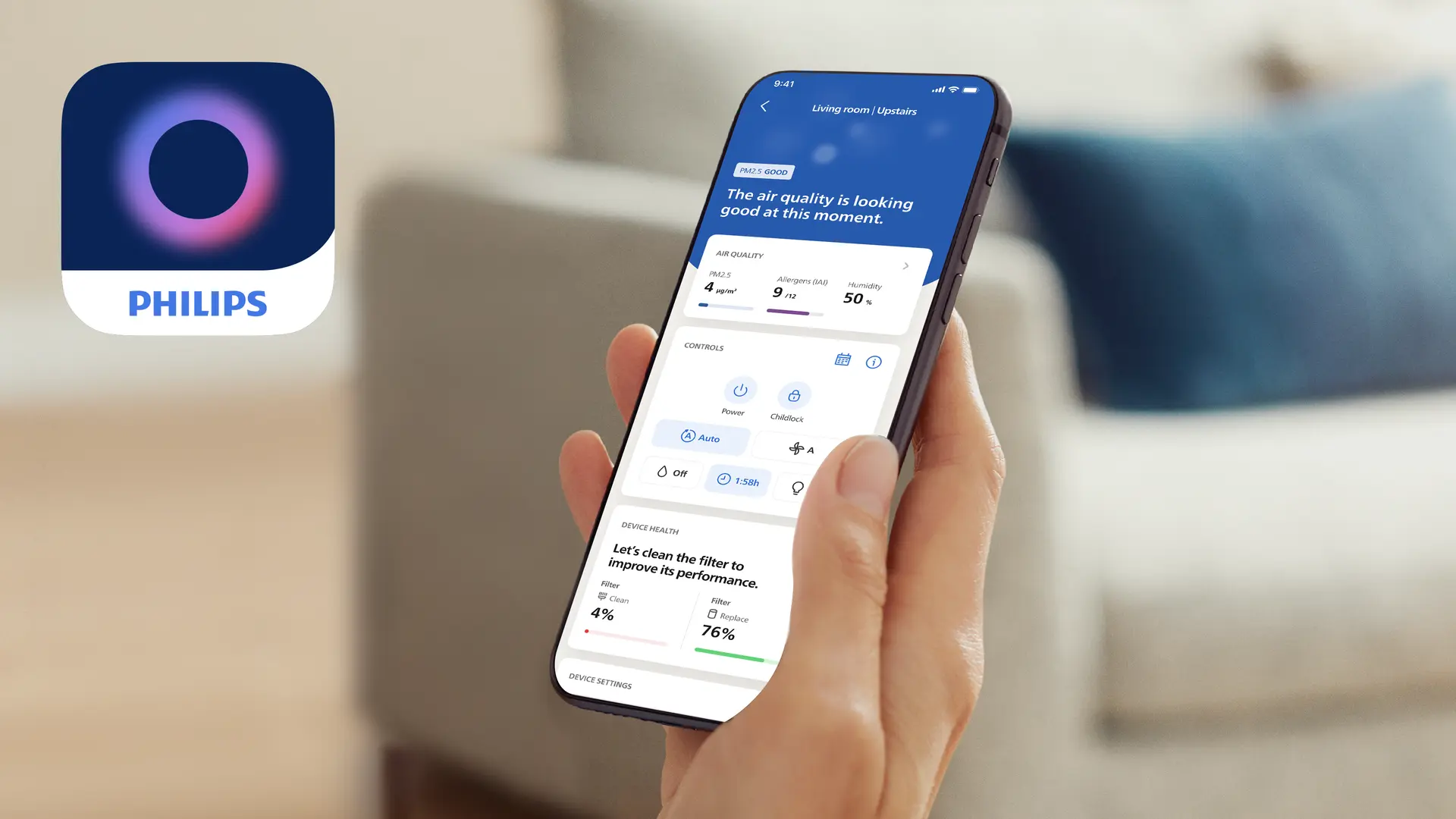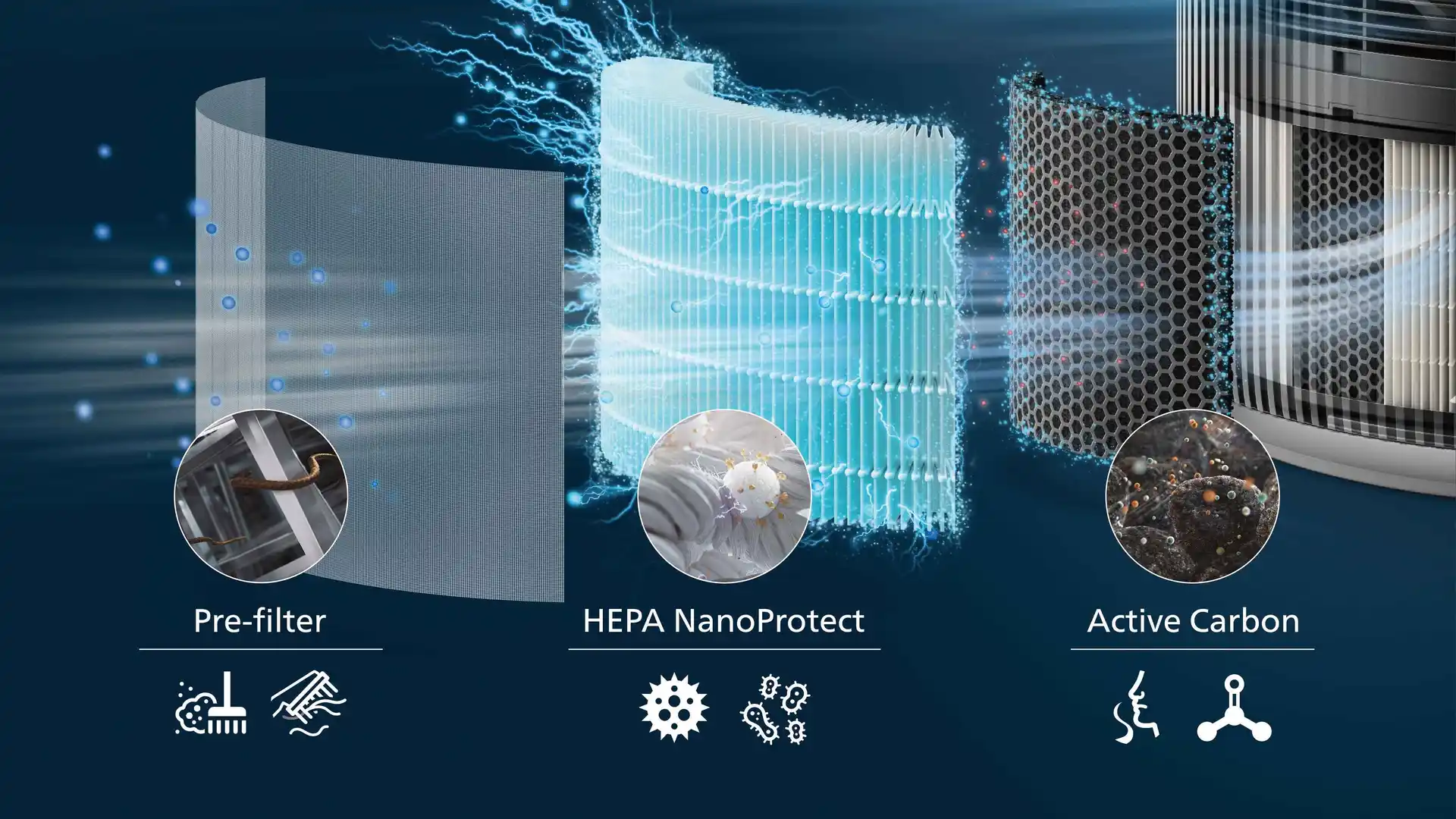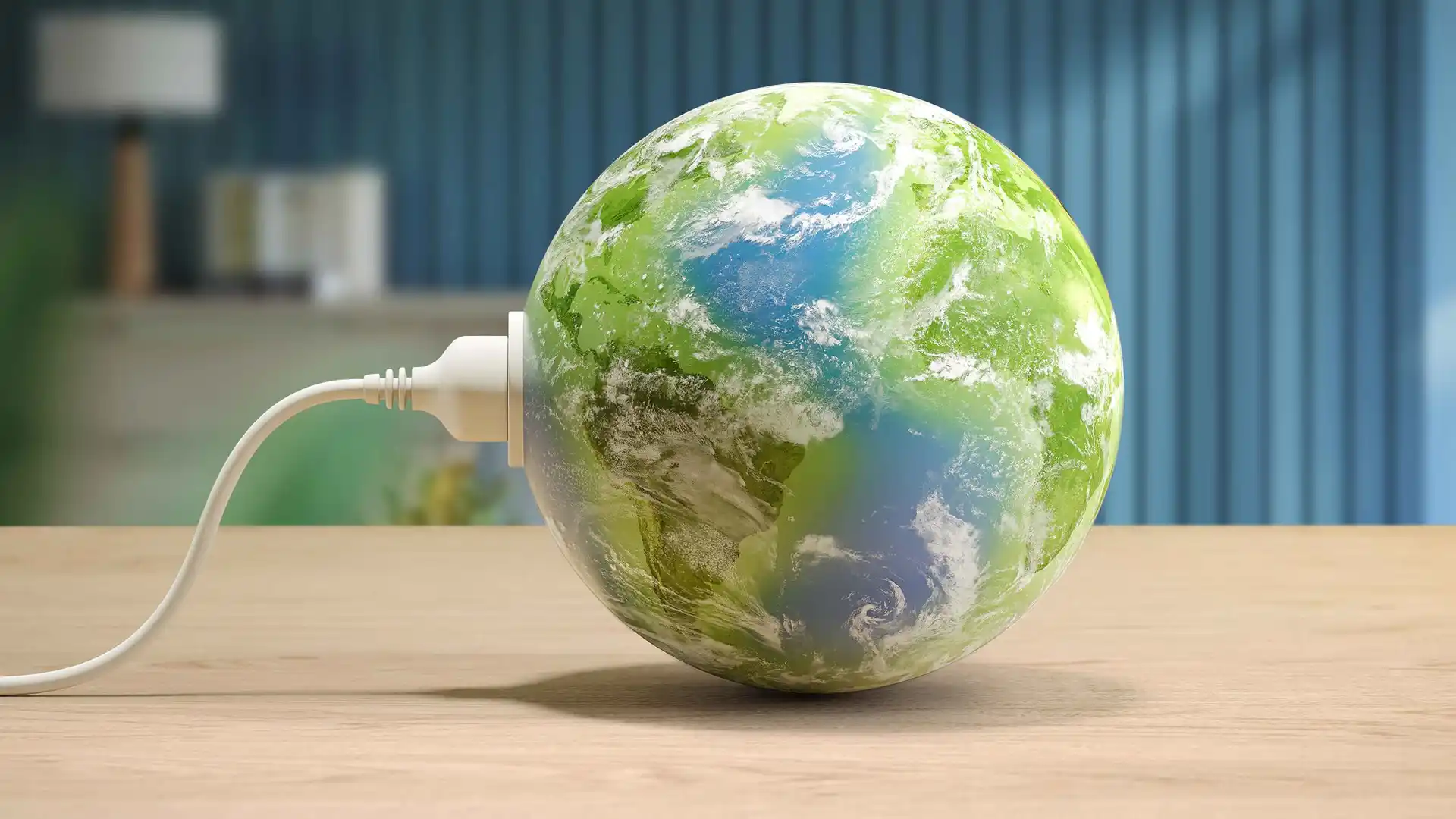Air Purifiers | Philips Home
Powerful Air purifiers for your home

80+ years of scientific innovation
Over 80 years of scientific research and development to provide the best indoor air.
2 year warranty and 30 day returns
Extended warranty and 30 day returns period
Free delivery
All purchases over £20 come with free shipping
Buy now, pay later
Defer payment for up to 30 days with Klarna
Find the Philips Air Purifier for you
The HEPA NanoProtect filter

Unlock your home's potential with the Philips Air+ App
Monitor and control your air, at home or away. Philips Air+ App provides a smart experience that ensures you are in charge of the air you breathe.
What others say
Award winning
Select your accessories
Frequently asked questions
Can Philips air purifiers remove coronavirus from the air?
As with the H1N1 virus, we have started working with renowned partners to prove the effectiveness of our air purifiers in removing coronavirus aerosols. Previously, through independent tests, Philips has proven that its air purifiers reduce the concentration of influenza A (H1N1) virus aerosols in the air passing through the filter by 99.9%.
How did we test the performance of Philips air purifiers against the H1N1 virus?
Will viruses spread again from the filter?
After the viruses are caught in the filter, they naturally become inactive. Depending on the ambient temperature, this can take anywhere from a few minutes to several hours. The viruses are unlikely to spread again from the filter. Our HEPA filter has a high particle capacity and is designed to effectively capture particles as small as 0.003 microns that will be filtered over its lifetime. For best results, we recommend that consumers change the filter when it has reached the end of its life.
How do Philips air purifiers work?
Can I use Philips air purifiers to remove viruses from the air?
How can I ensure good maintenance of my Philips air purifier filters?
How do I dispose of the Philips filter?
What does CADR mean?
CADR is the volume of filtered air given off by an air purifier. It is a measure of the speed of cleaning and a reflection of the airflow times the filter efficiency.
Therefore, a separate air flow for measuring the performance of air purifiers is meaningless, it is unfiltered air. Only when you take into account how much air has been filtered can we name the amount of really clean air.
For example, if the air flow is 500 m3 / h, the filter efficiency is 50%, CADR is only 250 m3 / h - and only delivers 250 m3 of clean air in an hour.
CADR measures the cubic meter of filtered air per hour, it is about the cleaning speed. Therefore:
• The larger the room, the higher the CADR required to clean the room.
• The dirtier the room, the higher the CADR must be.
Since the outside environment is a critical factor in the indoor air, the same CADR could clean a larger room in countries with lower pollution levels. Therefore, different standards for calculating the room size have been created by different countries, which are tailored to the respective situation.
What is a HEPA filter?
A HEPA (High Efficiency Particulate Air) filter must be able to remove 99.97% of airborne particles down to 0.3 microns in size.
Efficiency refers to how many particles the filter can capture and remove from the incoming air stream of an air purifier. In 99.97% of the 10,000 inflowing particles, only about 3 of them escape.
Where is the best place to set up the air purifier?
Shop our other products
¹ Particles of 0.003 microns; from the air which passes through the filter, tested with NaCl aerosol by iUTA according to DIN71460-1.
² Philips guarantees performance of purifier only with original replacement parts.
³ From the air that passes through the filter, tested with NaCl aerosol by a third-party laboratory.
⁴ Vs. predecessor Philips AC3033 (CADR and noise).
⁵ Sound pressure, IEC 60704, at 1.5m. Normal conversation: 60 dB.
⁶ Average energy use of Philips air purifiers, source Air+ app.
⁷ Microbial Reduction Rate Test by Airmid Healthgroup Ltd. with influenza (H1N1) in 28.5m3 test chamber, using turbo mode for 30-40min.
⁸ Tested to GB21551.3-2010 with S. Albus, 30m3 chamber, 1h, Turbo mode, 3rd party lab.
⁹ Microbial Reduction Rate Test by Antimikrop with SARS-CoV-2 in 30m3 test chamber, using turbo mode for 1h.
¹⁰ From the air that passes through the filter, tested with house dust mite, birch pollen and cat allergens according to SOP 350.003 of the Austrian OFI institute.
¹¹ Allergic Rhinitis and its Impact on Asthma (ARIA) 2008, written by J. Bousquet and approx. 50 other KOL’s, Allergy 2008: 63 (Suppl. 86): 8–160.
¹² CADR vs. predecessor AC3033.
Free delivery
All purchases over £20 come with free shipping
Buy now, pay later
Defer payment for up to 30 days with Klarna
Emissions offset
We compensate all CO2 emissions on all shipments of our Philips shop.
Turning houses into homes for +130 years
Designing home appliances for your home while caring for our home planet




